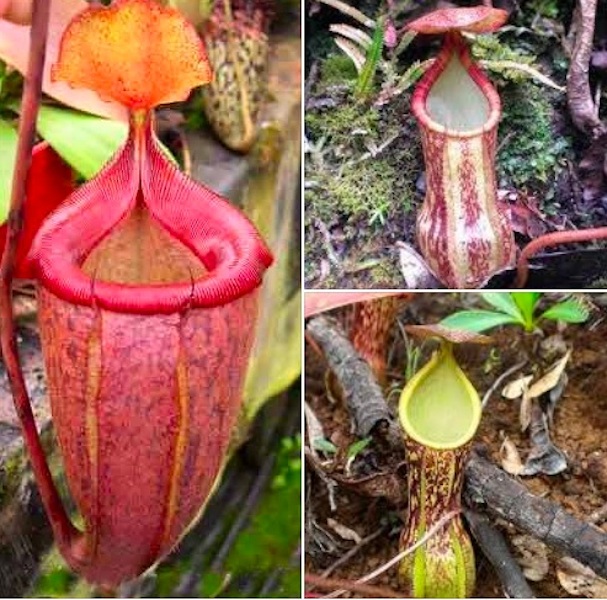DAVAO CITY (MindaNews / 27 October) — Conservationists here plan to utilize the DNA (deoxyribonucleic acid) testing facility of the Philippine Genome Center Mindanao Satellite Facility (PGC-MSF) in their research on the tissue culture of the endemic pitcher plants in Mt. Hamiguitan in Davao Oriental to propagate the species and save it from extinction, Anthony Sales, regional director of the Department of Science and Technology (DOST) said on Sunday.
“This is one of the areas where the DNA techniques can be used to analyze and preserve the genetic material of indigenous flora and fauna,” he said.
 Pitcher plants courtesy of Mt. Hamiguitan FB page
Pitcher plants courtesy of Mt. Hamiguitan FB page
Sales said the pitcher plants of Mt. Hamiguitan are among the species of endemic flora and fauna in Mindanao that government wants to focus on for biodiversity conservation and preservation efforts.
He added that they plan to use the DNA testing facility “to discover ways on how we can use, how we can multiply or propagate these endangered species and mass propagate them and bring them back to nature.”
The center, temporarily housed at the Biotechnology Building of the College of Science and Mathematics at the University of the Philippines – Mindanao (UP Mindanao) will be launched on Monday.
The PGC-MSF will be transferred to the two-story Research Development and Extension (RDE) Building of College of Science and Mathematics once the construction of the building is completed.
In an email, the PGC-MSF said its Research and Development, Bioinformatics, Science Education and Training, and Diagnostics and Laboratory Services, started operating since February 1, 2019 but full operation of the facility is expected by January 2020.
“Research collaborations with various universities and other institutions have already started,” it added.
Mt. Hamiguitan is a United Nations Educational, Scientific and Cultural Organization (UNESCO) world heritage site after its inscription on June 23, 2014, the sixth in the Philippines.
 Dir. Anthony C. Sales, of the Department of Science and Technology (DOST)-Davao. MindaNews photo by ANTONIO L. COLINA IV
Dir. Anthony C. Sales, of the Department of Science and Technology (DOST)-Davao. MindaNews photo by ANTONIO L. COLINA IV
Sales added the genome center would help the researchers, led by the Davao Oriental State University and Center for Biodiversity Research at the Central Mindanao University in Bukidnon, to determine the characteristics of the pitcher plants.
He said they will study the pitcher plants to determine if they have some medicinal properties.
He said it is important to first determine its characeristics, its habitat “because you cannot just extract them from their habitat if they still have critical mass or if it’s population will not be affected if we extract them for experimentation.”
The Mt. Hamiguitan Range Wildlife Sanctuary, declared a protected area under RA 9303, measures 16,923 hectares covering the towns of San Isidro and Governor Generoso, and Mati City.
Mt. Hamiguitan has been recorded to have 963 species of flora and 440 species of fauna, 341 of which are endemic to the Philippines.
The plants include 729 angiosperms, 27 conifers, 164 ferns and allies, 17 mosses, 13 liverworts, and 13 lichens while the known fauna include 15 species of non-flying mammals, 11 species of flying mammals, 108 species of birds, 33 species of reptiles, 18 species of frogs, 142 species of butterflies, 31 species of dragonflies and damselflies, 46 species of spiders, four species of earthworms, 15 species of nematodes, and 17 species of freshwater fish. (Antonio L. Colina IV / MindaNews)
